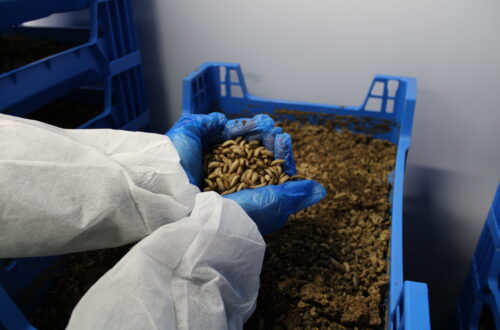The Power of a Public Figure’s Voice
In August 2025, Serena Williams, the tennis legend with 23 Grand Slam titles, made headlines by revealing she used GLP-1 medications to lose 31 pounds after struggling with post-pregnancy weight gain. Her candid admission, shared on platforms like the Today Show and in interviews with People and Vogue, sparked a global conversation about anti-obesity drugs. Could her influence as an athlete and cultural icon shift public perception and reduce the stigma surrounding these medications? Let’s dive into this complex issue, exploring its implications, societal context, and what it means for everyday people.
Understanding Anti-Obesity Drugs and Their Stigma
What Are GLP-1 Medications?
GLP-1 receptor agonists, like Ozempic, Wegovy, and Zepbound, mimic a hormone that regulates appetite, promotes satiety, and slows digestion. Originally developed for type 2 diabetes, these drugs have gained popularity for weight loss, helping users shed significant pounds when paired with lifestyle changes. They’re not magic pills but tools that require commitment to diet and exercise for optimal results.
Why the Stigma Exists
The stigma around anti-obesity drugs stems from a cultural belief that weight loss should come from willpower alone. Critics often label these medications as “shortcuts” or accuse users of being “lazy.” This perception is amplified by societal pressure to meet idealized body standards, especially for women, making many feel ashamed for seeking medical help. Serena’s openness challenges this narrative head-on.
Serena Williams’s Journey: A Relatable Struggle
A Champion’s Battle with Weight
Serena Williams, a symbol of athletic prowess, admitted on the Today Show that even she couldn’t overcome post-pregnancy weight gain through exercise alone. After the birth of her daughters, Olympia (2017) and Adira (2023), she trained rigorously—running, biking, and stair-climbing for hours—yet her body didn’t respond as it once did. “I hit a wall,” she told People, describing how her body felt like it was “missing something.” Her decision to use GLP-1s wasn’t about vanity but about reclaiming her health.
Why Her Story Resonates
Serena’s story is deeply relatable. As a mother, athlete, and public figure, she faced the same postpartum challenges many women encounter. Her transparency about struggling despite her discipline—training five hours a day—humanizes the experience of needing medical support. It’s a reminder that even the most accomplished among us can face hurdles that require unconventional solutions.
The Impact of Serena’s Admission on Public Perception
Breaking the Silence
Caleb Luna, an assistant professor of feminist studies at the University of California, called Serena’s admission a “breakthrough.” By speaking out, she challenges the stereotype that anti-obesity drugs are for “lazy” people. Her status as an elite athlete dismantles the notion that these medications are only for those lacking discipline. This could encourage others to view GLP-1s as legitimate medical tools rather than shortcuts.
A Double-Edged Sword?
However, not everyone sees Serena’s announcement as positive. Some fans expressed disappointment, arguing it undermines her legacy of body positivity. On X, users like @FatouSambe1 called her promotion of GLP-1s “problematic,” suggesting it prioritizes aesthetics over health. Others worry it reinforces societal pressure to conform to a certain body type, especially since Serena didn’t look like this during her athletic prime. This tension highlights the complexity of her influence.
The Role of Celebrity Endorsements in Shaping Attitudes
Serena’s Partnership with Ro
Serena’s role as a paid ambassador for Ro, a telehealth company offering GLP-1 medications like Zepbound and Wegovy, adds a layer of skepticism. Her husband, Alexis Ohanian, is an investor and board member at Ro, raising questions about her motives. Critics on X, like @JoolzDenby, argue her endorsement is driven by financial gain, not just a desire to destigmatize. Yet, her openness about this partnership adds transparency, which could build trust.
Other Celebrities Paving the Way
Serena isn’t alone. Celebrities like Oprah Winfrey, who uses GLP-1s to manage weight fluctuations, and Whoopi Goldberg, who lost significant weight with these drugs, have also spoken out. Their collective voices amplify the conversation, showing that weight loss medications are tools, not crutches. This trend could normalize their use, much like antidepressants became more accepted over time.
The Science Behind GLP-1 Medications
How They Work
GLP-1 drugs mimic glucagon-like peptide-1, a hormone that signals fullness to the brain, slows stomach emptying, and regulates blood sugar. They’re FDA-approved for obesity and diabetes, often prescribed alongside lifestyle changes. Serena emphasized that her 31-pound loss over eight months wasn’t just due to the drug—she maintained a strict diet and exercise regimen. This synergy is key to their effectiveness.
Benefits of GLP-1 Medications
- Weight Loss: Clinical trials show users can lose 15-20% of their body weight over a year.
- Health Improvements: Reduced risk of heart disease, better blood sugar control, and less joint pain (as Serena noted).
- Mental Clarity: Users like Serena report feeling “lighter mentally,” boosting overall well-being.
Potential Risks and Side Effects
- Common Issues: Nausea, vomiting, and diarrhea are frequent, though Serena reported no side effects.
- Rare Complications: Gallbladder or kidney problems can occur in some cases.
- Long-Term Commitment: Effects often stop if the medication is discontinued, requiring lifelong use for some.
Comparing Serena’s Approach to Traditional Weight Loss Methods
| Method | Pros | Cons |
|---|---|---|
| GLP-1 Medications | Effective for stubborn weight loss, improves health markers, FDA-approved | Expensive, potential side effects, requires lifestyle changes |
| Diet and Exercise | Cost-effective, builds long-term habits, widely accessible | May not work for everyone, time-intensive, requires high discipline |
| Surgical Options | Dramatic results, long-lasting for some | Invasive, higher risk, costly, long recovery time |
Serena’s experience highlights that even extreme dedication to diet and exercise may not suffice post-pregnancy or for former athletes adjusting to new lifestyles. GLP-1s offer a middle ground—less invasive than surgery but more structured than diet alone.
The Societal Context: Weight, Stigma, and Women
The Pressure on Women’s Bodies
Women face disproportionate scrutiny over their weight, especially in the public eye. Serena’s physique has been critiqued throughout her career, from accusations of being “too muscular” to now facing claims she’s chasing a “white woman’s aesthetic.” These criticisms reflect broader societal expectations that women must fit a narrow ideal, regardless of their achievements. Her admission challenges this by prioritizing health over appearance.
Postpartum Struggles Are Universal
Dr. Claire Madigan, a behavioral medicine expert, notes that elite athletes like Serena often struggle with weight loss after retiring due to changes in metabolism and calorie needs. Postpartum weight gain compounds this, as hormonal shifts and new responsibilities make traditional methods harder. Serena’s story validates the experiences of countless women who feel they’ve “failed” despite their efforts.
The Economic Barrier: Accessibility of GLP-1 Drugs
Cost and Access Challenges
GLP-1 medications are expensive, often costing $1,000-$1,500 per month without insurance. Dr. Madigan worries that Serena’s story might demotivate those who can’t afford these drugs, as they may feel even an elite athlete with resources needed medical help. This raises questions about equity—how can the average person access these tools? Telehealth platforms like Ro aim to bridge this gap, but affordability remains a hurdle.
Where to Get GLP-1 Medications
- Telehealth Platforms: Companies like Ro offer consultations and prescriptions online, making access easier.
- Pharmacies: Available through traditional pharmacies with a doctor’s prescription.
- Insurance: Some plans cover GLP-1s for obesity or diabetes, but coverage varies widely.
The Broader Implications for Public Health
Normalizing Medical Interventions
Serena’s campaign with Ro aims to normalize GLP-1 use, much like how antidepressants shifted from taboo to mainstream. By framing these drugs as tools for health, not aesthetics, she could inspire others to seek help without shame. This is particularly impactful for African American women, who face higher risks of diabetes, a condition GLP-1s also treat.
Potential Risks of Over-Promotion
Critics warn that celebrity endorsements could oversimplify the risks. X posts, like @sapnamadan’s claim that GLP-1s are a “shortcut to death,” reflect fears about safety and long-term effects. While rare, serious side effects like kidney issues deserve more discussion. Serena’s lack of side effects may not be universal, and public health campaigns must balance optimism with caution.
People Also Ask (PAA) Section
What are GLP-1 medications, and how do they work?
GLP-1 medications mimic a hormone that regulates appetite and blood sugar, helping users feel full faster and lose weight. They’re FDA-approved for obesity and diabetes, requiring lifestyle changes for best results. Serena Williams used them to lose 31 pounds, emphasizing they’re not a shortcut.
Are anti-obesity drugs safe?
GLP-1 drugs are generally safe but can cause nausea, vomiting, or, rarely, kidney and gallbladder issues. Serena reported no side effects, but experiences vary. Consult a doctor to weigh risks and benefits.
Why did Serena Williams use weight loss drugs?
Serena turned to GLP-1s after struggling to lose post-pregnancy weight despite intense training. She aimed to reach a “healthy weight” for her well-being, not just appearance, and to reduce joint pain and diabetes risk.
Can anyone use GLP-1 medications?
GLP-1s are prescribed for obesity or diabetes, often with lifestyle changes. They’re not suitable for everyone, and a doctor’s evaluation is needed. Cost and insurance coverage can also limit access.
Pros and Cons of Serena’s Influence on Anti-Obesity Drug Stigma
Pros
- Normalizes Medical Help: Her story validates seeking medical support, reducing shame.
- Inspires Confidence: Shows even elite athletes need help, challenging “lazy” stereotypes.
- Health Focus: Emphasizes benefits like better joint health and blood sugar control.
Cons
- Financial Conflicts: Her Ro partnership and husband’s investment raise ethical questions.
- Accessibility Issues: High costs may alienate those who can’t afford GLP-1s.
- Mixed Messages: Some see it as prioritizing aesthetics over body positivity.
Best Tools for Exploring Weight Loss Options
- Telehealth Services: Platforms like Ro or Noom offer consultations for GLP-1s or lifestyle coaching. Visit Ro
- Health Apps: MyFitnessPal tracks diet and exercise to complement medical interventions.
- Medical Guidance: Consult endocrinologists or obesity specialists for personalized plans.
FAQ Section
1. How much weight did Serena Williams lose with GLP-1 drugs?
Serena lost 31 pounds over eight months using a GLP-1 medication, starting after her second daughter’s birth in 2023.
2. Why is there stigma around weight loss drugs?
Stigma arises from beliefs that weight loss should come from willpower alone, with drugs seen as “cheating.” Serena’s admission aims to challenge this view.
3. Are GLP-1 drugs covered by insurance?
Coverage varies. Some plans cover GLP-1s for obesity or diabetes, but many require out-of-pocket payment, costing $1,000-$1,500 monthly.
4. Can GLP-1 drugs be used long-term?
Yes, but effects often stop if discontinued, so some users, like Serena, plan to use them long-term under medical supervision.
5. How can I access GLP-1 medications?
Consult a doctor or use telehealth platforms like Ro. A prescription is required, and costs depend on insurance and provider.
A Personal Reflection: My Encounter with Weight Loss Struggles
As a writer, I’ve seen friends grapple with weight loss, especially after life changes like pregnancy or career shifts. One friend, a marathon runner, shared how postpartum weight gain felt like a betrayal of her body. Despite running daily, the scale wouldn’t budge. She hesitated to try medications, fearing judgment, until a doctor explained how GLP-1s could complement her efforts. Her story mirrors Serena’s—no one’s immune to these challenges, and admitting you need help isn’t weakness. It’s courage.
The Road Ahead: Will Serena’s Voice Change the Game?
Serena Williams’s admission is a bold step toward destigmatizing anti-obesity drugs, but it’s not a cure-all. Her influence could inspire confidence in those hesitant to seek medical help, particularly women navigating postpartum or health challenges. Yet, the high cost of GLP-1s and ethical concerns about her Ro partnership complicate the narrative. As more celebrities like Oprah and Whoopi share their stories, the conversation may shift, but only if paired with education about risks, access, and realistic expectations.
Her journey reminds us that health is personal, not a one-size-fits-all battle. By speaking out, Serena’s not just shedding pounds—she’s shedding shame, inviting others to do the same. Whether this sparks a lasting change depends on how society balances admiration for her honesty with critical scrutiny of the broader implications. For now, she’s served an ace in the fight against stigma, and the world is watching the rally unfold.




